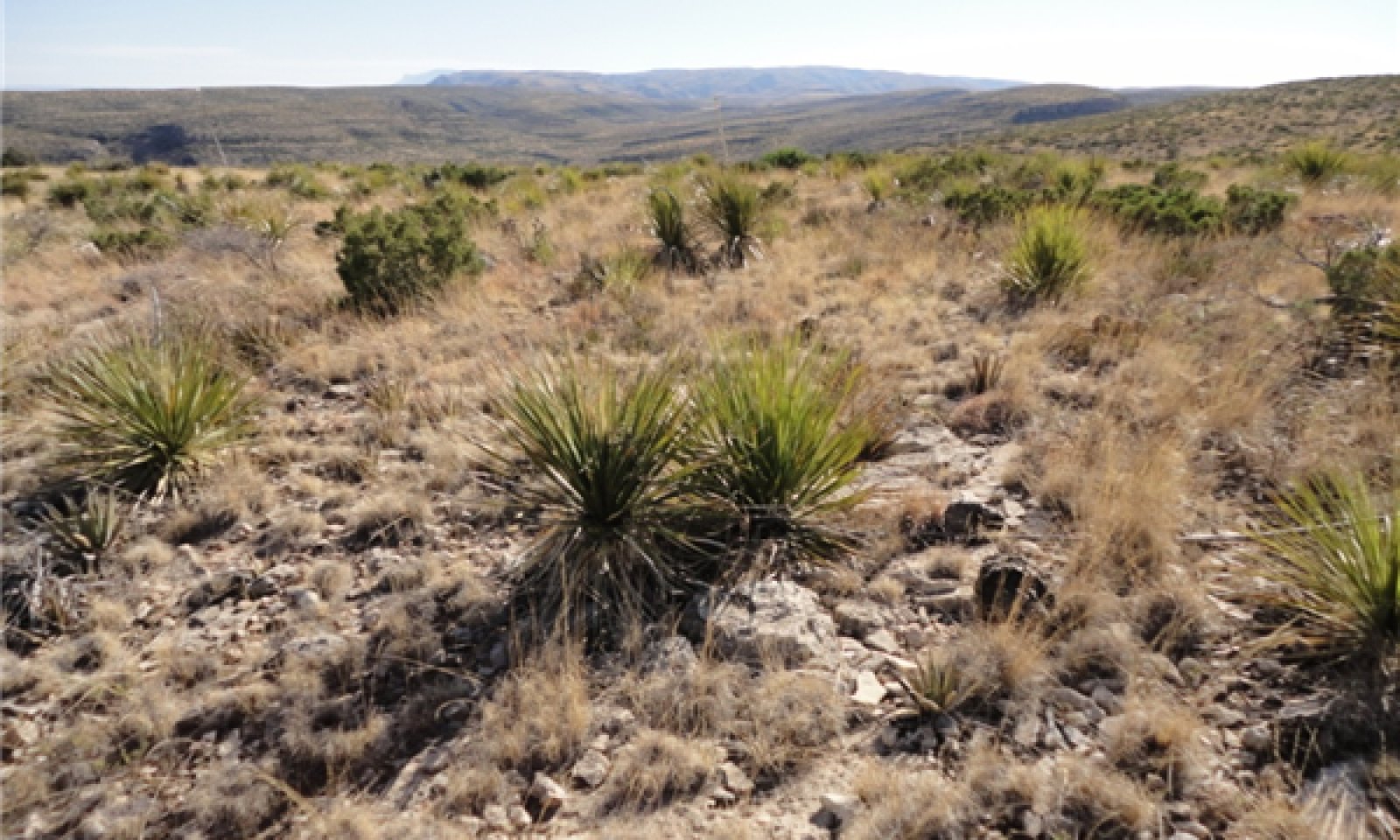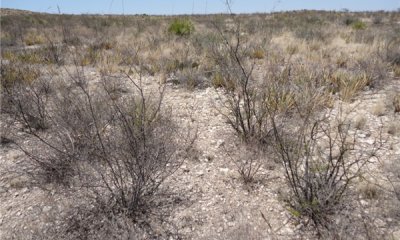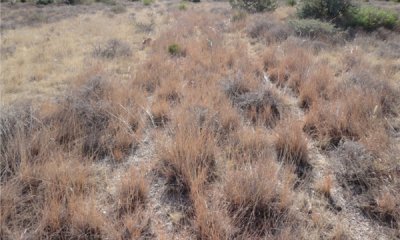
Very Shallow
Scenario model
Current ecosystem state
Select a state
Management practices/drivers
Select a transition or restoration pathway
- Transition T1A More details
- Restoration pathway R2A More details
- Restoration pathway R3B More details
-
No transition or restoration pathway between the selected states has been described
Target ecosystem state
Select a state
State 1
Reference State






Description
1.1 Warm season grasses/shrubs/succulents (diagnostic plant community)
A mix of grasses, shrubs and succulents is present. Total foliar cover is > 65%, depending on the amount of rock outcrop.
1.1A Community Pathway: This pathway represents intervals between fires, during which natural processes increase shrub and succulent vigor and decrease grass production and percent composition.
1.1B Community Pathway: This pathway represents fire. Fire suppresses succulents and many shrubs, giving grasses a competitive advantage.
1.2 Shrubs/succulents/warm season grasses: Over time, foliar cover of shrubs and succulents increases and that of warm season grasses decreases.
1.2A Community Pathway: This pathway represents an interval between fires which is longer than the historic range of variability. Fire suppression, whether through loss of fuel load due to herbivory or from fighting natural wildfires, has increased shrub and succulent vigor and decreased grass production and percent composition.
1.2B Community Pathway: This pathway represents fire. Fire suppresses succulents and many shrubs, giving grasses a competitive advantage.
1.2C Community Pathway: This pathway represents a growing competitive advantage from nitrogen fixing shrubs due to slow changes in soil chemistry and hydrology.
1.3 Warm season grasses/scattered shrubs: This plant phase exists after fire. Grasses respond well to fire, while many shrubs and succulents decrease.
1.3A Community Pathway: This pathway represents intervals between fires, during which natural processes increase shrub and succulent vigor and decrease grass production and percent composition. Over time, plant community 1.3 shifts to 1.1.
1.3B Community Pathway: This pathway represents prescribed burning at a more frequent rate than what is considered to be within the historic range of variability.
1.4 At risk: shrubs/warm season grasses/succulents/nitrogen fixing shrubs: Due to gradual changes in hydrologic function and soil chemistry, succulents and shrubs increase over time. The increased abundance of native nitrogen fixing shrubs such as whitethorn and catclaw mimosa is a key indicator that this community phase is “at risk.”
1.4B Community Pathway: This pathway represents fire. Fire sets back succulents and many shrubs, giving grasses a competitive advantage.
1.4D Community Pathway: A change in livestock grazing management promotes grass vigor and decreases shrub competition. This accelerates the turnover of fine roots, causing an increase in labile carbon, acceleration in decomposition, and a resulting increase in plant available water.
T1A Transition one: Slow variables: Continued encroachment by whitethorn acacia, coupled with the loss of herbaceous plant species, causes a decrease in soil organic matter, leading to a decrease in plant available water. Trigger event: A severe drought causes loss of soil organic carbon. Threshold: A hydrologic function/soil chemistry threshold is crossed.
1.5 Reduced warm season stoloniferous grasses/ scattered shrubs and succulents: This plant phase is the result of consistent fire every five to seven years. It is characterized by the loss of fire-sensitive species such as black grama and lechuguilla.
1.5A Community Pathway: This pathway represents time between fires, during which natural processes increase shrub and succulent vigor and decreases grass production and composition.
T1B Transition two: This transition is the mechanical removal of the topsoil to build infrastructure such as roads and drilling pads.
2.0 Nitrogen fixing shrubs/succulents/shrubs/warm season grasses State
2.1 Whitethorn Acacia/succulents/shrubs/warm season grasses: Whitethorn acacia has become a prominent plant on the site. Foliar cover has decreased to < 40%. A higher Nitrogen turnover rate increases the invasiveness and stability of Whitethorn. This community has a mix of shrubs, succulents, and warm season grasses.
R2A Restoration Process: An increase in the competitive advantage of non-nitrogen fixing species through physical, chemical, and biological management practices.
3.0 Topsoil removal from oil/gas pads, roads and other infrastructure State
3.1 Sideoats Grama/low seral perennials/annuals: This community occurs where the topsoil has been removed and the area (be it an old road or oil/gas pad) has been abandoned. Very little soil organic matter and native mycorhizal fungi occur on this State. After many years of abandonment, sideoats grama, which is not quite as dependent on native mycorhizal fungi, can dominate this site.
R3B Restoration Process: The replacement of mineral soil, range seeding, and incorporation of organic material.
Submodel
Description
Whitethorn acacia has become a prominent plant on the site. Foliar cover has decreased to < 40%. A higher Nitrogen turnover rate increases the invasiveness and stability of Whitethorn. This community has a mix of shrubs, succulents, and warm season grasses.
Submodel
Transition T1A


Mechanism
This transition moves the site across a threshold to state two. Slow variables: Continued encroachment by whitethorn acacia, coupled with the loss of the herbaceous plant community. Both a chemical and hydrological shift occurs as the C:N decreases creating an increase in the nitrogen turnover rate and creating an on-going competitive advantage for nitrogen fixing shrubs.
Trigger event: A severe drought, causing a loss of organic carbon. Threshold: A hydrologic function/soil chemistry threshold is crossed.
Restoration pathway R2A


Mechanism
An increase in the competitive advantage of non-nitrogen fixing species through physical, chemical, and biological management practices.
Various facilitating and management practices can be used to restore this ecological site back to reference. Chemical, mechanical, and biological practices can all be used to suppress whitethorn and other acacias in the plant community. Also, range seeding, winter feeding, and browsing, and high intensity-short duration livestock grazing can help bring grass seed and organic matter back into the system and start restoring soil carbon and microbial levels. Once adequate fuel levels have been reached, prescribed burning will help reduce shrub competition and improve grass vigor. Monitoring foliar cover by species will help inform the land manager if plant composition is responding to management.
Restoration pathway R3B


Mechanism
To restore this site, it is best to have saved the scraped topsoil and re-apply once the activity is concluded. Facilitating practices such as range seeding, weed control, and high intensity-short duration livestock grazing can also expedite the restoration.
Model keys
Briefcase
Add ecological sites and Major Land Resource Areas to your briefcase by clicking on the briefcase (![]() ) icon wherever it occurs. Drag and drop items to reorder. Cookies are used to store briefcase items between browsing sessions. Because of this, the number of items that can be added to your briefcase is limited, and briefcase items added on one device and browser cannot be accessed from another device or browser. Users who do not wish to place cookies on their devices should not use the briefcase tool. Briefcase cookies serve no other purpose than described here and are deleted whenever browsing history is cleared.
) icon wherever it occurs. Drag and drop items to reorder. Cookies are used to store briefcase items between browsing sessions. Because of this, the number of items that can be added to your briefcase is limited, and briefcase items added on one device and browser cannot be accessed from another device or browser. Users who do not wish to place cookies on their devices should not use the briefcase tool. Briefcase cookies serve no other purpose than described here and are deleted whenever browsing history is cleared.
Ecological sites
Major Land Resource Areas
The Ecosystem Dynamics Interpretive Tool is an information system framework developed by the USDA-ARS Jornada Experimental Range, USDA Natural Resources Conservation Service, and New Mexico State University.

